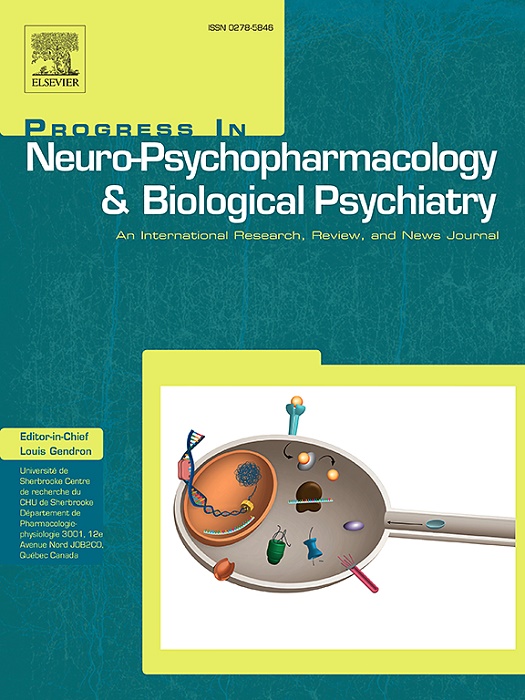Activation of Kv7.2/3 channels in the PL-NAcc circuit attenuates methamphetamine-associated contextual memory
IF 3.9
2区 医学
Q1 CLINICAL NEUROLOGY
Progress in Neuro-Psychopharmacology & Biological Psychiatry
Pub Date : 2025-09-02
DOI:10.1016/j.pnpbp.2025.111483
引用次数: 0
Abstract
Methamphetamine (METH), a powerful psychoactive substance, promotes the formation of the persistent drug-associated memories that have a significant contribution to relapse in drug addiction. The reward circuit of prelimbic cortical (PL) to the nucleus accumbens core (NAcc) is closely related to METH-associated contextual memory. To evaluate METH-associated contextual memory, we employed the conditioned place preference (CPP) paradigm. Inhibition of the PL-NAcc circuit by using chemogenetic strategies could significantly suppressed METH-induced CPP. The expression of Kv7.2 and Kv7.3 in the PL projecting to NAcc was reduced in METH-administered mice compared to control mice. In METH-administered mice, METH-induced CPP, neuronal excitability and synaptic plasticity in the PL-NAcc circuit could be attenuated by injecting the Kv7.2/3 agonist retigabine in PL. Furthermore, overexpression of Kv7.3 channels' in the PL-NAcc circuit attenuated METH-induced CPP. Our findings identify hat the PL-NAcc circuit could be the main reason in METH-associated contextual memory and provide evidence that Kv7.2/3′ activation in the PL may emerge as a novel therapeutic strategy for METH abuse.
PL-NAcc回路中Kv7.2/3通道的激活会减弱甲基苯丙胺相关的情境记忆。
甲基苯丙胺(Methamphetamine,简称冰毒)是一种强大的精神活性物质,它能促进持久的药物相关记忆的形成,而这种记忆对毒瘾的复发有重要作用。大脑边缘皮层(PL)到伏隔核(NAcc)的奖赏回路与冰毒相关的情境记忆密切相关。为了评估甲基醚相关的情境记忆,我们采用了条件位置偏好(CPP)范式。通过化学发生策略抑制PL-NAcc回路可显著抑制甲基安非他明诱导的CPP。与对照组小鼠相比,给药小鼠向NAcc投射的PL中Kv7.2和Kv7.3的表达减少。在给药小鼠中,通过在PL中注射Kv7.2/3激动剂雷嘉滨,可以减弱甲基醚诱导的CPP、PL- nacc回路中的神经元兴奋性和突触可塑性。此外,PL- nacc回路中Kv7.3通道'的过表达可以减弱甲基醚诱导的CPP。我们的研究发现,PL- nacc回路可能是冰毒相关情境记忆的主要原因,并提供证据表明,Kv7.2/3’激活可能成为冰毒滥用的一种新的治疗策略。
本文章由计算机程序翻译,如有差异,请以英文原文为准。
求助全文
约1分钟内获得全文
求助全文
来源期刊
CiteScore
12.00
自引率
1.80%
发文量
153
审稿时长
56 days
期刊介绍:
Progress in Neuro-Psychopharmacology & Biological Psychiatry is an international and multidisciplinary journal which aims to ensure the rapid publication of authoritative reviews and research papers dealing with experimental and clinical aspects of neuro-psychopharmacology and biological psychiatry. Issues of the journal are regularly devoted wholly in or in part to a topical subject.
Progress in Neuro-Psychopharmacology & Biological Psychiatry does not publish work on the actions of biological extracts unless the pharmacological active molecular substrate and/or specific receptor binding properties of the extract compounds are elucidated.

 求助内容:
求助内容: 应助结果提醒方式:
应助结果提醒方式:


